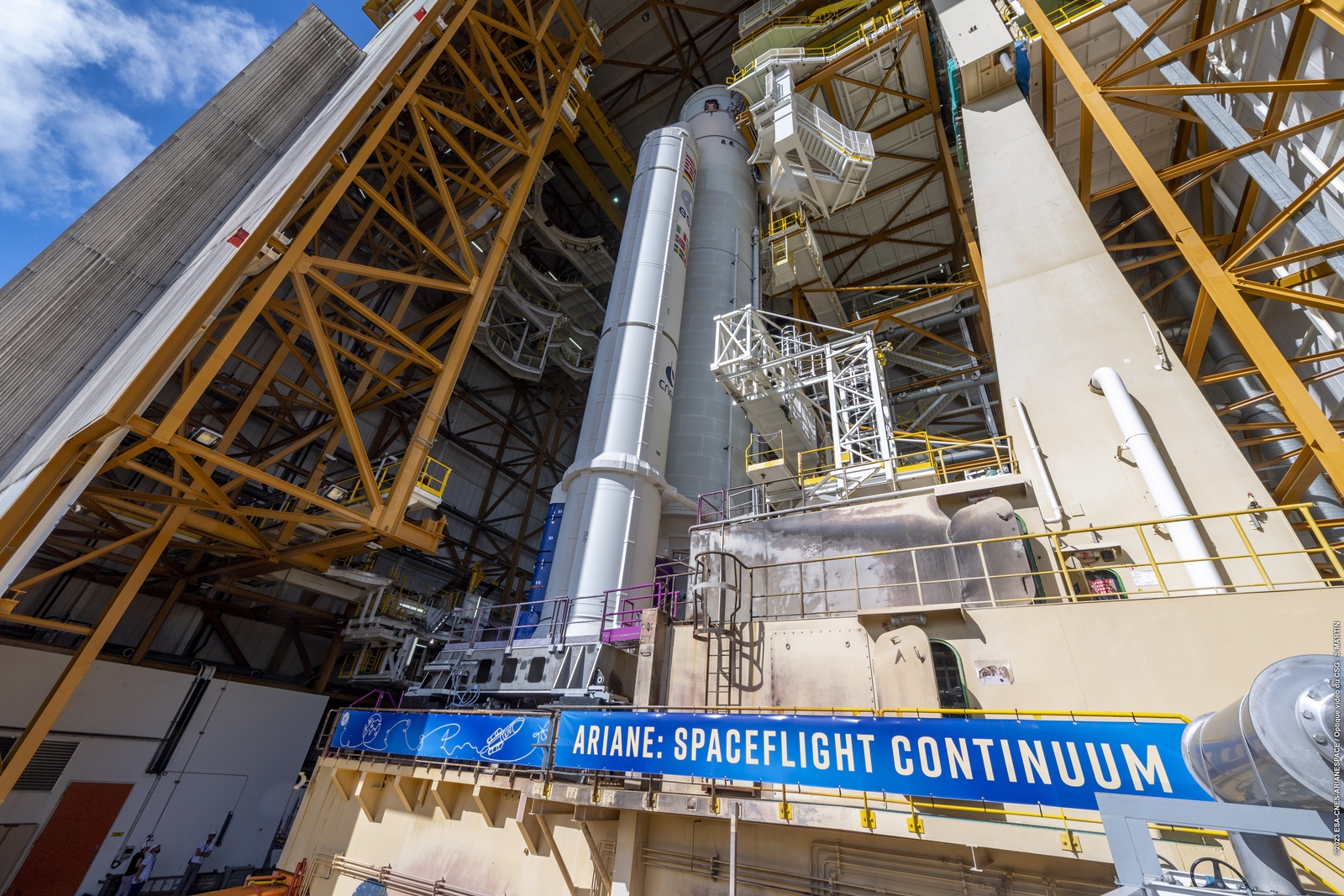Products You May Like
WASHINGTON — Arianespace has postponed the final launch of the Ariane 5, potentially for several weeks, after discovering a potential problem with pyrotechnical systems on the rocket.
Arianespace announced June 15 it was postponing the 117th and final launch of the Ariane 5, which had been scheduled for June 16 from Kourou, French Guiana. A brief statement, made shortly after rollout of the rocket from its final assembly building to the launch pad was canceled, said only that there was “a risk to the redundancy of a critical function” on the rocket.
In a briefing a few hours later, Pierre-Yves Tissier, chief technical officer at Arianespace, said that the company was informed June 9 of a “nonconformance” in pyrotechnical transmission lines like those used on the Ariane 5 during acceptance testing for another program. X-ray inspections of the Ariane 5 raised doubts about three lines on the vehicle, one used in the separation system for one of the two solid rocket boosters, and two in the “distancing” system used for the boosters.
Both the separation and distancing systems have redundancies to ensure they operate, but Tissier said the company’s policy was to launch only with that redundancy intact. Arianespace then decided to test four lines with characteristics similar to the three suspect lines, with those tests taking place June 14 and 15.
“Because these tests were not all successful, and therefore were not able to give us sufficient confidence on the reliability of the redundancies, it was decided not to go in flight and to replace these doubtful lines,” he said.
Arianespace has not set a new launch date for the mission. Tissier said the company would provide an update in the last week of June about the progress in replacing the lines and planning for a new launch attempt. That suggests a delay of at least a few weeks, and perhaps longer.
The launch, designated VA261 by Arianespace, is carrying two government communications satellites. One, Heinrich-Hertz-Satellit, was built by OHB for the German Space Agency, working in collaboration with other German government agencies. The spacecraft will test advanced communication satellite technologies, such as onboard processing. The other, Syracuse 4B, is a communications satellite built for the French military by a consortium of Airbus Defence and Space and Thales Alenia Space.
The launch, when it does occur, will mark the retirement of the Ariane 5. The vehicle made its first, unsuccessful launch in June 1996, and suffered a partial failure on its second launch in October 1997 before an unqualified success on its third launch in October 1998. For much of its career, the Ariane 5 was a major player in the commercial launch market, capable of launching two large geostationary communications satellites at a time.
With the retirement of Ariane 5, Europe will be left temporarily without the ability to launch large satellites on its own rockets. Arianespace had expected to overlap the end of the Ariane 5 with the introduction of the Ariane 6, but that vehicle has suffered development delays that pushed back its first launch by several years. Arianespace and the European Space Agency have not announced a new projected date for the first Ariane 6 launch, but executives with OHB, which is a supplier for the program, said in May they now expected the first launch to take place in early 2024.
The Ariane 6 delays are exacerbated by a failure of the Vega C in December 2022 that has grounded that vehicle, as well as the withdrawal of the Soyuz rocket from French Guiana after Russia’s invasion of Ukraine in February 2022. This has created what some in Europe have called a “launcher crisis” for the continent.
“It is true that, for some months, we will not have independent access for Europe into space with our own rockets, but this is very temporary,” Josef Aschbacher, director general of ESA, said June 5 during the Financial Times’ “Investing in Space” event. He noted Vega C should return to flight by the end of the year.
“If, for a couple of months, there’s not a rocket available, it’s bad enough. I’m the first one to call this a crisis,” he said. “But this is not something permanent.”
